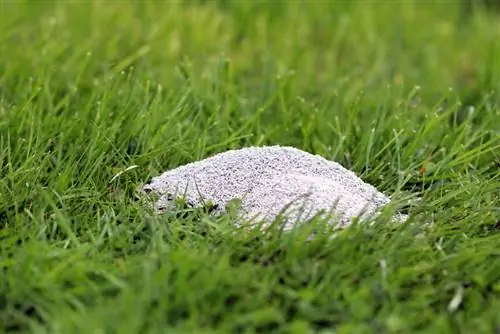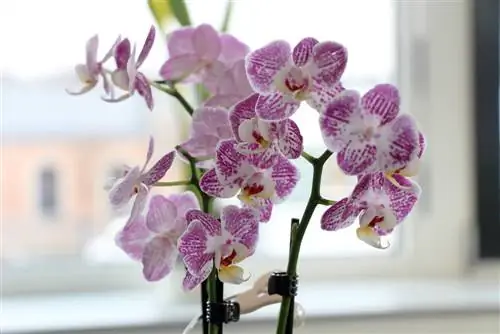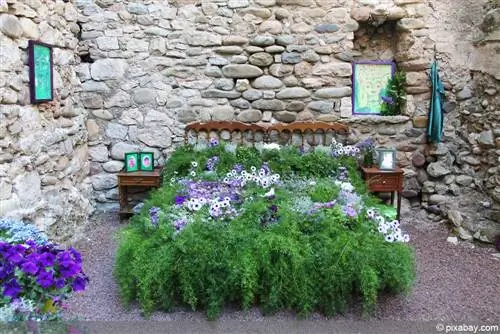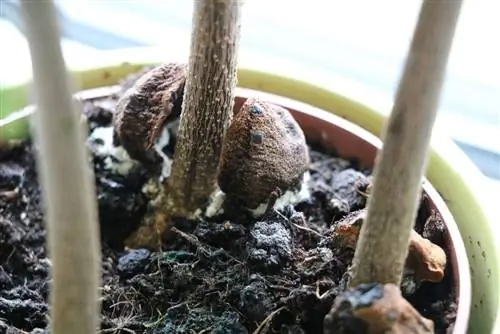- Author admin [email protected].
- Public 2023-12-17 03:39.
- Last modified 2025-06-01 06:48.
Leaf shine spray not only ensures beautiful, shiny leaves on plants and protects against pests, but also prevents dust deposits and lime stains - at least that's what the manufacturers of leaf shine spray advertise. But is that actually true or is the spray more harmful than useful?
Who doesn't know this: the plants in the apartment quickly collect dust and become unsightly. In winter, when the heating is on, pests such as spider mites or scale insects attack the beloved rubber tree. Leaf shine spray is supposed to work against all of these problems. Quickly sprayed on - and the leaves shine like never before. In addition, leaf shine spray is intended to strengthen the plant, remove water stains and protect against renewed dust.
The Abandonment of the Leaves
Leaves are one of the most important organs of any plant. Photosynthesis takes place in them, i.e. the conversion of carbon dioxide to oxygen. They are the place responsible for plants' energy production. Most of the water is converted or evaporated in the leaves. The upper surface of leaves often has a waxy coating. This layer protects the leaf from dirt and excessive evaporation, and the rainwater rolls off. The cold caused by the evaporation of water (evaporation cold) also protects the leaves from overheating. Important tasks of the leaves:
- Photosynthesis
- intensive gas exchange
- Transpiration (evaporation of water)
- Cooling
How leaf shine spray works
Leaf shine spray consists of various oily substances that are sprayed into the finest droplets (aerosol) using a propellant gas. This fine oil film lies on the leaves of plants and ensures an intense shine. The oils have a water-repellent effect, so that when the plant is sprayed, the water does not remain on the leaves but instead rolls off. This prevents limescale stains that occur when tap water dries. Before treatment, heavily dusty leaves must be cleaned with lukewarm water, otherwise the oil will combine with the dust to form a greasy film.
Tip:
The spray may only be used very sparingly. Drips from the leaves must be avoided.
Suitable for which plants?
Leaf shine spray is only suitable for hard-leaved ornamental plants. To ensure that important pores on the underside of the leaf are not blocked, the product may only be sprayed sparingly onto the upper side of the leaf from a distance of at least 30 centimeters. Leaf shine spray is not harmful for sclerophyll plants, which naturally have a waxy layer on the upper side of the leaves. These include:
- rubber tree
- Window leaf (Monstera)
- Tree Friend
- Aralie
- various Ficus species
Which plants should not be treated?
Only a very limited number of plants are suitable for treatment with leaf shine spray. Most plants react to spraying with yellowing leaves. Leaf shine spray is harmful for:
- young leaves
- hairy or dull leaves
- Flowers and stems
- Undersides of leaves
Tip:
The agent causes leaf death on all soft-leaved plants because it either clogs the pores on the top of the leaf or penetrates into the leaf itself because it does not contain a protective layer.
Stomata in the leaf
Plants generate energy in the leaves. This requires sunlight as well as the gases carbon dioxide and oxygen. The gases enter the leaves through stomata, which are present in large numbers, especially on the underside of the leaves. But there is also a layer of cells with many such stomata on the top of the leaf. These openings are very important because they regulate the supply and removal of gases as well as evaporation. If it gets very hot, the stomata close. Gas exchange decreases and the evaporation of water is also severely restricted. This helps the plants prevent the leaves from drying out and dying. Therefore, under no circumstances should “care measures” be carried out that block these stomata.
wax layer
Some plants have a waxy coating on the top of the leaves that reduces water loss. This waxy coating usually consists of cutin, which are natural polymers that repel water. These waxes are solids. For practical reasons, leaf shine spray does not contain this natural polymer (wax) as a solid would be very difficult to apply to the leaves. The leaf shine spray therefore contains liquid, oily components that have a similar effect.
Protection against diseases
The wax layer also serves to defend the plant against bacteria, viruses and fungal spores, as these can be easily washed off when it rains. An artificial layer of oil from the leaf shine spray increases this water-repellent effect, but the microorganisms in the home are not washed away by the rain, so the protection ultimately has no effect. Regularly rinsing the leaves in the shower is more effective. Water works without chemical additives by freeing the leaves from dirt and dust as well as harmful microorganisms.
Do plants need leaf shine spray?
Hard-leaved plants such as the window leaf or a rubber tree naturally have a thin layer of wax on the upper side of their leaves. You don't need any additional oils to maintain this natural protective mechanism. The plant's vitality is not improved by leaf shine spray; only optimal site conditions and species-appropriate care can help. For many plants whose leaves are soft or appear naturally dull, the use of leaf shine spray is actually harmful. Leaf shine spray visually enhances the color of the leaves and ensures an intense shine. This only gives the impression that the plant is fresh and he althy.
Dust and dirt
A thick layer of dirt or dust on the leaves of plants is not only unsightly, but also limits their full functionality. Sunlight can only reach the top of the leaf in reduced amounts, meaning less photosynthesis can occur. The plant therefore receives less energy. Outdoors, wind and rain prevent the leaves from becoming dirty. These phenomena do not occur in the apartment, so there is often a thick layer of dirt on the leaves. This is where the idea of leaf shine spray comes in. It provides a smooth, water-repellent layer that makes it difficult for dirt to settle on the sheet. However, too much of the oily substances clog the stomata and attract dust even more.
Danger to people and animals?
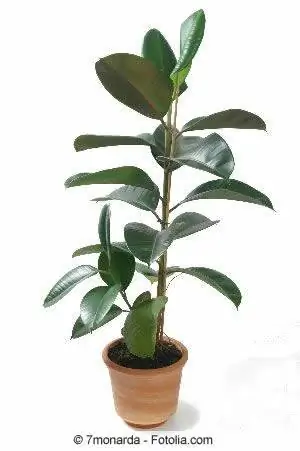
The fumes released when spraying leaf shine spray can cause drowsiness and dizziness in humans and animals if inhaled. Some ingredients irritate the eyes and skin. If the drug is accidentally swallowed, it causes lung damage. That's why the manufacturers recommend wearing:
- Safety glasses
- breathing mask
- Gloves
- suitable protective clothing
Leaf shine spray may only be used in very well ventilated rooms, preferably outdoors. If larger amounts of the aerosol are inhaled, irregular breathing and respiratory arrest may occur.
Tip:
If you have cats in your household, you should avoid leaf shine spray. If the cat tampers with the treated plant, it can be harmful to it.
Highly flammable vapors
Leaf shine spray contains propellants to spray the liquid active ingredients. Most manufacturers use a mixture of propane and butane. These are two gases that are also used in lighters or camping gas bottles. When using leaf shine spray, flammable gases and vapors develop, which can form explosive mixtures without sufficient ventilation. Therefore, both the container and the aerosols must be kept away from sources of ignition and smoking must not be allowed during use.
Dangerous for the environment
Some ingredients in the leaf shine spray are also toxic to aquatic organisms. They can have long-term harmful effects in bodies of water (and also in flower pots). For this reason, spray cans of leaf shine spray must not simply be thrown into the household waste, but must be handed in to the collection point for household chemicals after they have been completely emptied.
Conclusion
Although leaf shine spray ensures an intensive shine on the leaves, leaf shine spray is not necessary or beneficial for the plants. Leaf shine spray is only suitable for hard-leaved plants; the oil that sits on the leaves is rather harmful for all other plants. Since the sprays contain both highly flammable and harmful substances (for humans and animals) and must later be disposed of as hazardous waste, their use is not recommended. Leaf shine gives the leaves of medium- and hard-leaved plants a long-lasting, he althy, silky shine. This makes the plants look bright and fresh.


